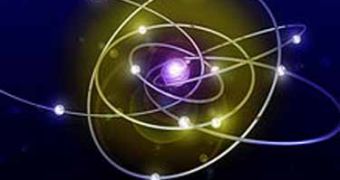For the first time in history a team of researchers successfully created a system of three entangled diamond nuclei, which they believe to lead to solid state systems that make use of both ions and photons in an entangled state of multiple particles. Entanglement is basically a quantum effect through which the properties of one of two particles can be measured making use of the properties of the other particle, regardless of the distance separating the two.
However, entanglement is difficult to achieve even in systems of two photon particles, not to mention multiple solid particles, since they have to be prevented from interacting with the medium, which could alter the quantum system turning it into a classical one. Nevertheless, some researchers succeeded in entangling as much as eight calcium ions and five photons, while solid state systems remained somehow off limits.
Up to now, that is. "If we compare the quality of entanglement in our experiments with those of ions and photons, our results compare favorably", said Joerg Wrachtrup from the University of Stuttgart. Along with colleagues from the University of Tsukuba, the National Institute of Advanced Industrial Science and Technology, the Nanotechnology Research Institute and Texas A&M University, Wrachtrup created an entangled system inside a carbon-13 isotope diamond, with an electron defect represented by the presence of a nitrogen atom.
As the electron interacted with the surrounding carbon nuclei, the system was shined with a laser in order to induce the nuclei into a preferential quantum state. Next, the spin of a nucleus was entangled with that of another nucleus by applying a radio-frequency magnetic field.
"The method itself is not new. It is the system itself which we discovered to be addressable as a single quantum system almost a decade ago. Meanwhile we can engineer this defect to such a degree that we do have excellent control," says Wrachtrup. He also explained that similar pulses are being used in nuclear magnetic resonance spectroscopy techniques.
Because diamond nuclei can be kept into a coherent state for a longer time and are much easier to control than other systems, they are currently the preferred option for the construction of quantum computational systems. The problem is that they can only be brought into an entangled state with electron defects and that entangling them may sometimes prove rather difficult. Nevertheless Weachtrup believes that in the future up to six diamond nuclei may be entangled at one time.

 14 DAY TRIAL //
14 DAY TRIAL //